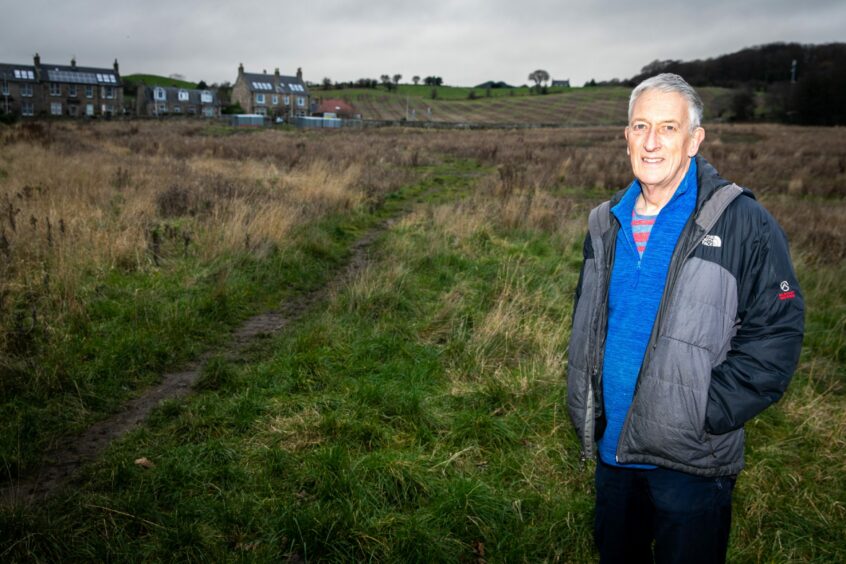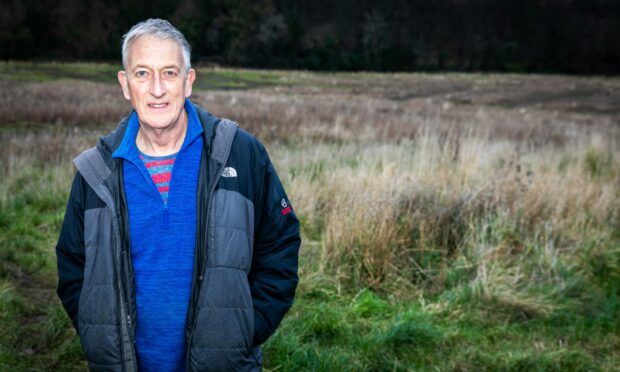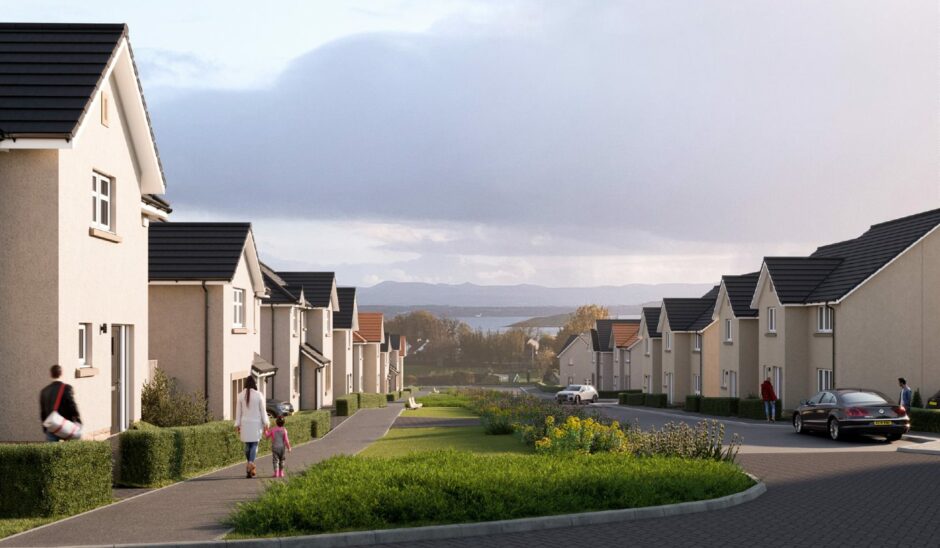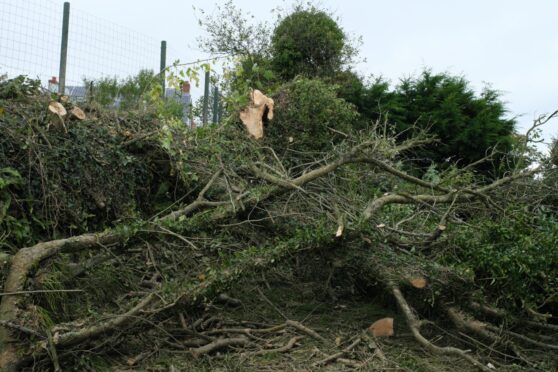An Aberdour resident claims new Cala homes in the village will be ‘obsolete within 10 years’.
Richard Luxmoore launched a local campaign to urge the company to build the homes to higher environmental standards.
He fears those who move into the houses Cala is building off Main Street will be out of pocket because of the need to retrofit lower carbon technology in the coming years.
Cala planning manager Steven Cooper says they will be the village’s “most energy-efficient new build homes”.
But Richard describes Cala’s efforts to reduce environmental impact as “minimal and tokenistic”.
What measures are Cala taking to help achieve net zero?
Steven says the company is committed to being:
- Operationally net zero carbon from 2030.
- Net zero greenhouse gas emissions by the Scottish Government’s 2045 target and ahead of the UK Government’s 2050 target.
The Cala planning manager says the homes in Aberdour “not only meet all of the highest current standards, they exceed them”.
Houses will have wiring for electric vehicle charging and solar electricity panels connected to a ‘smart hot water system’.
Smart systems can reduce hot water energy consumption by 20%.
The company is now on site and work will get started in January.
But is it enough?
Richard, 66, worked as a senior nature conservation advisor.
Now retired, he continues to crusade for the environment.
And Cala’s promises have left him unconvinced.
A number of residents in the village have backed his call for the new homes to be more energy efficient.
“If you build to these standards, the homes constructed will be effectively obsolete within 10 years,” says Richard.
“It is always cheaper to fit the necessary measures when the house is being built rather than having to retrofit it later.
“It would be good to point out to prospective buyers that they will face this cost.”

Richard wrote to Cala outlining what he would like see happening at the housing development overlooking the Silver Sands.
He wants to see the homes insulated to Passivhaus standard.
Passivhaus is a voluntary building standard. Its insulation guidance sets out the importance of using the right materials and installation procedures.
Richard also wants to see the homes fitted with ground-source or air-source heat pumps.
And he says solar thermal panels are a better option for heating water.
Rather than generate electricity, solar thermal panels harness the sun’s heat.
According to the Renewable Energy Hub, solar thermal can be up to 70% more efficient at harvesting the sun’s heat than solar electric.
Fuel poverty fears
Richard told Cala in a letter that making the homes as efficient as possible was “particularly important” for the affordable units.
Those moving into affordable homes were “most in danger of falling into fuel poverty as a result of having inefficient homes,” he added.
“You have been frank enough to concede that the technology to build to net zero standards is available now and we are seeking to achieve this eminently achievable goal for the development in Aberdour.”
According to Richard, Cala’s “current financial strength” and the buoyant housing market in Aberdour would be enough to absorb any additional costs.
What are the current building requirements?
All buildings for sale require an Energy Performance Certificate (EPC).
The EPC indicates a building’s energy efficiency and environmental impact.
Ratings grade from A to G, with A being the best.
Cala’s new Aberdour homes will have an A rating.
There are also sustainability ratings. These are detailed in the Scottish Government’s building standards handbook.
The document sets out the aims of the Building (Scotland) Regulations 2004.
All new buildings must meet the minimum level – bronze – for sustainability.
Going beyond the minimum is voluntary
Exceeding the minimum bronze level is voluntary.
However, the handbook says: “Reaching upper levels should be a valid target for any new development, regardless of size or location.”
When Fife councillors approved the Aberdour plans, the committee report stated the Cala homes would reach the ‘silver active’ level set out in the 2019 handbook.
This is down to the solar electric panels.
Replying in writing to Richard, Cala managing director Craig Lynes acknowledged that the homes would not be “zero-carbon.”
And he conceded that “the technology to build to net zero standards is available now.”
But he added: “Scaling this across a business of Cala’s size is not straightforward and there are challenges outside of Cala’s direct control to overcome.”











